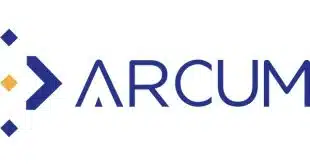Veteran payments practitioners will recall that, “in the beginning,” issuers paid interchange to merchants to incent them to accept credit card payments from the incipient Visa and Mastercard networks. By the inception of electronic draft capture (circa 1980), that acceptance was growing to a critical-mass level nationwide, and by the late 1990s few merchants could afford to lose business by rejecting these cards. despite the high-fee cards paid since that time by merchants.
Toss in a host of network rules that merchants view as restricting competition and disadvantaging debit card alternatives from rival networks, and you have the formula for the escalation in the interchange wars that the marketplace has experienced over the past several months.
What’s particularly noticeable now is the apparent convergence of merchant fervor with newfound regulatory zeal. The recently initiated Federal Trade Commission and Justice Department investigations of complaints that the networks are interfering with merchants’ debit-routing choice under the Durbin Amendment have clearly re-awakened long-simmering emotions over radioactive interchange policies.

But what might be a tipping point in this battle is Intuit’s antitrust lawsuit filed against Visa in February. As Thursday’s Part 1 noted, this suit came somewhat as a surprise and surfaced some longstanding issues—including legal challenges to what the software company claimed were fees (for example, Visa’s FANF and DDCA charges) that unfairly disincented both acquirers and issuers from supporting merchant efforts to lower costs and improve product choice with competition from rival EFT networks.
Further, the Intuit suit supports its claims of anticompetitive network rules and rates with testimony, findings, and rulings from courts and regulatory agencies in Europe, the United Kingdom, and Australia. The citations begin in 2007 in a Europe that was creating what became the Single European Payments Area (SEPA), under what is now Payments Services Directive-2 (PSD2).
“Rather than being tied to costs, the networks set Interchange Fees for each merchant segment based upon that segment’s elasticity of demand—i.e., the degree to which merchants, ISOs, and PayFacs in that segment ‘must take’ their cards,” Intuit’s complaint reads. The text goes on to cite Mastercard’s testimony in 2007 before the European Commission that the network had performed cost studies “to answer the question: ‘How high could interchange fees go before we would start having either serious acceptance problems . . . [or] surcharging or discounting for cash.’”
The Mastercard executive testified that the Mastercard interchange fees there were “not designed to allocate costs,” but instead were an attempt to “estimate the merchants’ willingness to pay for a Mastercard card.” Such testimony was damning then, in that country, and is likely to be influential in this case, in the United States.
The European Commission (EC), which had imposed a settlement with Visa in 2002 that lowered its interchange rates to 0.7%, saw that agreement expire in 2007, inspiring a new investigation. Meanwhile, the EC found Mastercard’s rate-setting unlawful in that year, and got that network to lower its rates to 0.3%, pending an appeal period. In 2012, the European General Court affirmed the 2007 Mastercard findings, and by 2015 both networks settled for 0.3% caps on cross-border credit card transactions and 0.2% caps for debit cards.
EC inquiries into the structure of the payment card business have resulted in other important changes, including the imposition of the Stronger Consumer Authentication (“SCA”) initiative—a pan-European effort to curtail soaring online fraud and put heavy pressure on the networks to field a robust and workable new version of 3-Domain Secure.
Net-net, the European card market has remained viable and profitable throughout, and—coupled with the EC’s Open Banking Initiative—is clearly shaping up to be much more competitive overall. As an example, some 16 of Europe’s biggest banks have banded together to form their own payment network, dubbed the European Payment Initiative (EPI). EPI’s aims portend a re-thinking of card payment rules, individualized product functions, and opportunistic business policies (albeit, perhaps, no reduction in merchant fees).
Intuit’s complaint also cites the U.K.’s Office of Fair Trade antitrust investigation of Mastercard’s domestic interchange fees, which culminated in a 2005 finding that high interchange was used to compensate for “extraneous costs,” such as the cost of rewards and the interest-free float period that consumers get as an inducement to spend with credit. Now fast-forward to mid-2020, when the U.K. Supreme Court upheld a 2018 ruling on a 2016 lawsuit by Sainsbury and other retailers against the bankcard networks, citing a stifling of retail competition due to high interchange fees and other practices.
A related ruling this past December by the U.K.’s highest court opened the way for re-consideration of an $18.6-billion class-action suit by some 46 million consumers against Mastercard. Incredibly, one month later, an apparently oblivious Mastercard said it would increase its fees to EU merchants on U.K. consumer purchases to 1.5% from the previous 0.3%, purely by dint of the U.K. leaving the EU, with Visa now appearing to follow suit. Whatever its rationale, the networks seem to be making the antitrust case easier and easier (while rival Visa continues to lie back to see what fallout might arise from Mastercard’s exploits).
Meanwhile, in Australia, regulation of card payments has been in place for more than two decades. The central bank—the Reserve Bank of Australia (“RBA”)—imposed a halving of interchange rates in 2002. Reviewing the results of a decade of regulation in 2012, the Intuit complaint noted, the EU acknowledged the RBA’s own findings that, contrary to Mastercard’s assertion that the interchange cuts would lead to a “death spiral” of the card business Down Under, in fact the industry had remained viable and profitable—as it does today.
But there was more. The RBA also capped rewards-card interchange at 80 basis points (vs. the general rate of 50 basis points) as part of an effort to both prevent issuers from gaming the general rate caps between periodic reviews and reduce the incentive for Australian merchants to impose heavy surcharges on consumers (an increasingly popular practice which also received limits from the RBA).
In another instance, the RBA has threatened to make big issuers use the low-cost national debit network (“eftpos”) for popular tap-and-go transactions as part of its national “least-cost routing” inquiry begun in 2018—the results of which were due in 2020. And in January, eftpos itself joined the blockchain-based Hedera initiative, which is developing a multi-enterprise/multi-industry public ledger to support innovative digital payments such as micropayments for Internet content and the Internet of Things (IoT). Imagine all that!
Such developments on interchange and payment regulation overseas are likely to find an eager audience in the U.S. as what appears to be a watershed year for the payments industry unfolds.




